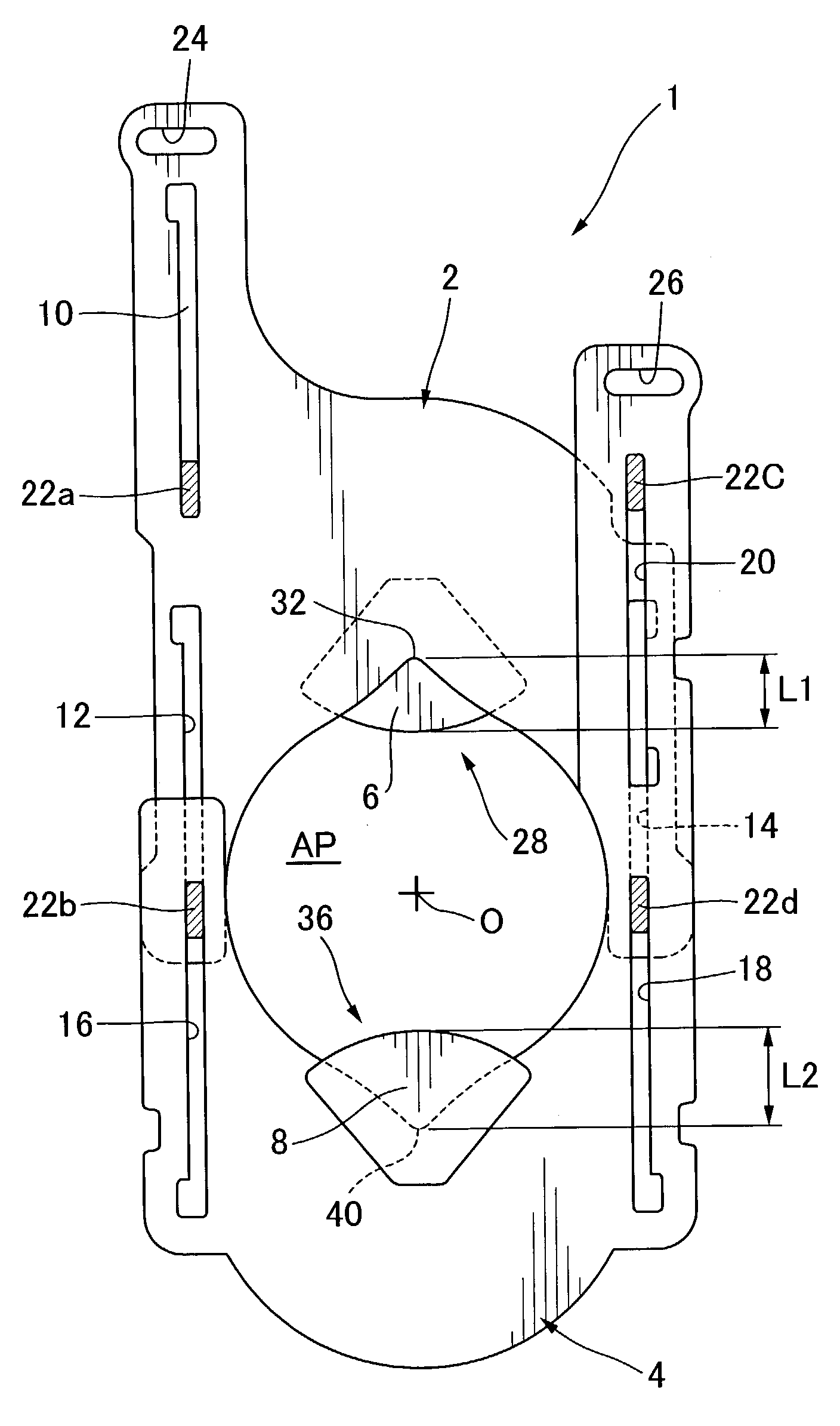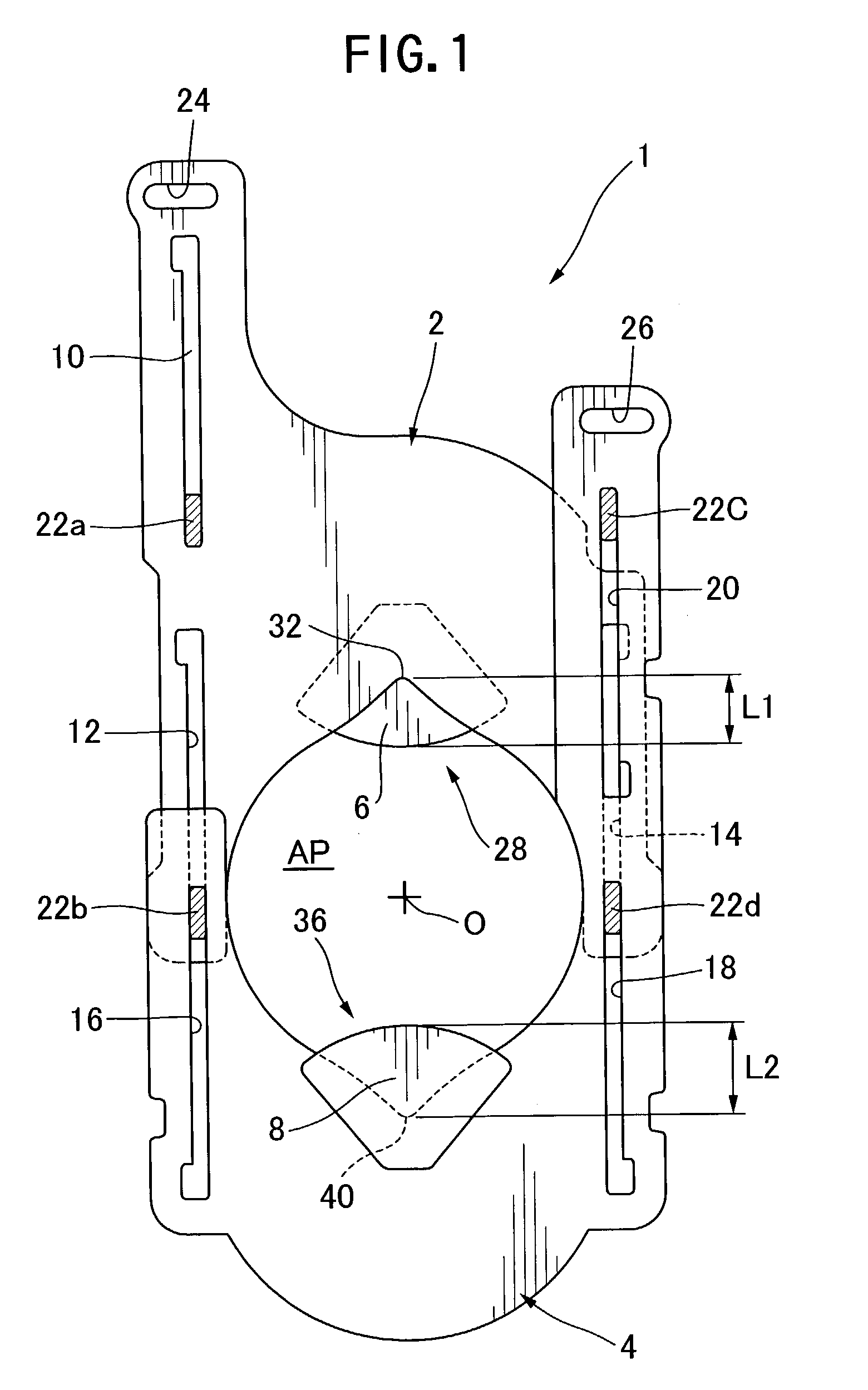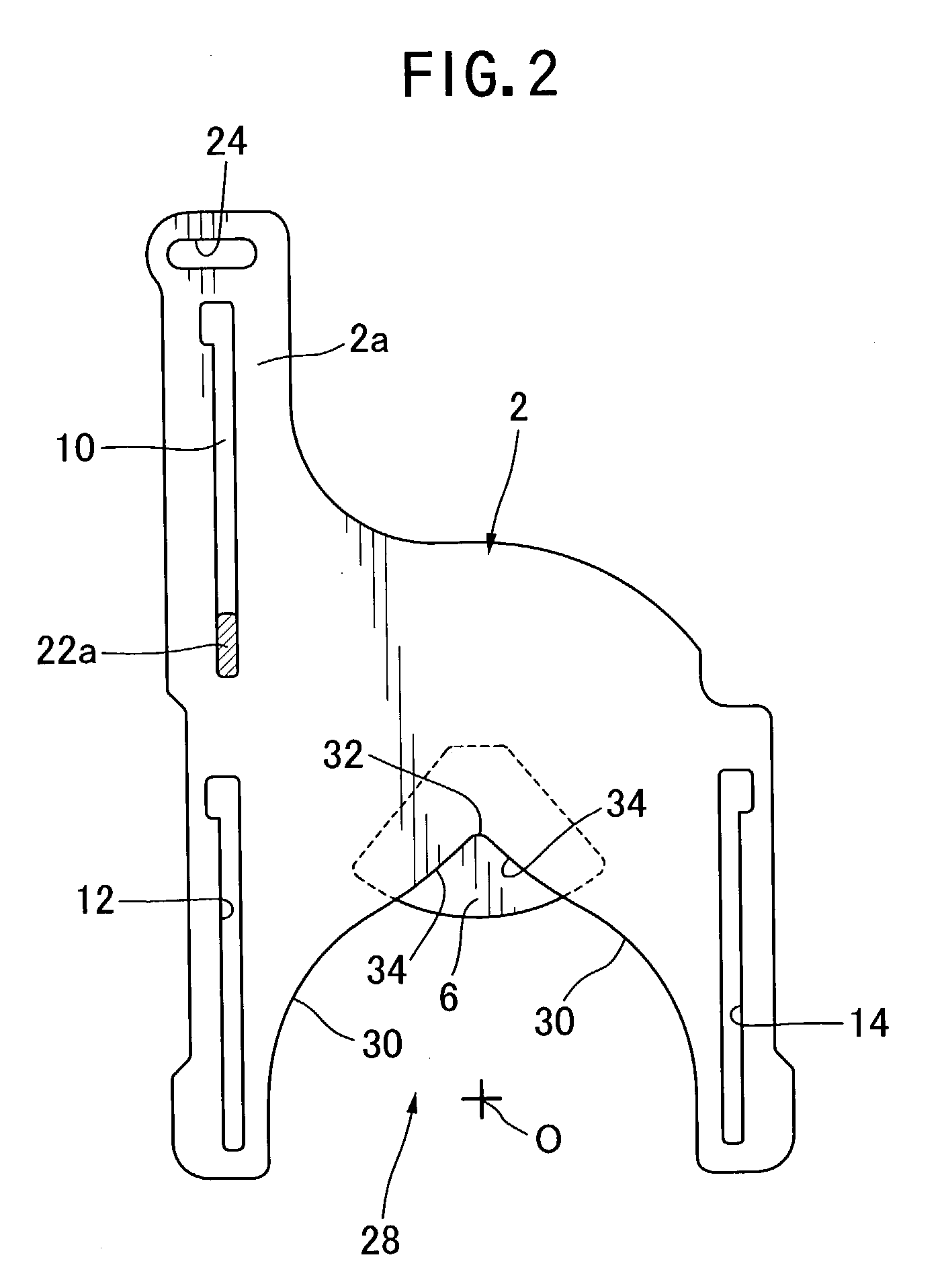Lens diaphragm device, video camera incorporated with the same, and lens for the video camera
a technology of diaphragm and lens, which is applied in the direction of camera filters, instruments, television systems, etc., can solve the problems of resolution decline, resolution decline, resolution decline,
- Summary
- Abstract
- Description
- Claims
- Application Information
AI Technical Summary
Benefits of technology
Problems solved by technology
Method used
Image
Examples
first embodiment
[0037] As shown in FIG. 1, the first embodiment or lens diaphragm device 1 according to the present invention is comprised of a first diaphragm vane 2 having a notch. 28 at its lower end, a second diaphragm vane 4 having a notch 36 at its upper end, an optical filter attached to the first vane 3, or namely, a first ND filter 6, a second ND filter 8 attached to the second vane 4, and an actuator (not shown) vertically moving two of the diaphragm vanes, and an aperture AP of the diaphragm is defined between the notches 28 and 36.
[0038] As can be seen in FIG. 2, the first vane 2 is an approximately rectangular thin plate shaped to have its upper left extending upward in a projection 2a and to have its lower side sunk into an approximately semicircular notch 28. The roughly semicircular notch 28 is composed of two approximately arcuate segments 30 extending upward from the lower side of the first vane 2 and two linear segments 34 respectively contiguous to the arcuate segments 30 with s...
second embodiment
[0045] As shown in FIG. 5, the second embodiment or a lens diaphragm device 201 includes a first diaphragm vane 2 having a notch 28 at its lower end, a second diaphragm vane 4 having a notch 36 at its upper end, an optical filter attached to the first vane 2, or namely, a first ND filter 206, a second ND filter 208 attached to the second vane 4, and an actuator (not shown) vertically moving two of the diaphragm vanes, and there is provided a diaphragm aperture AP between the notches 28 and 36. The first ND filter 206 shielding a deeper recess of the notch 28 is almost triangular in shape, and its end face shielding the diaphragm aperture is linear. The second ND filter 208 shielding a deeper recess of the notch 36 is shaped approximately like a fan, and it is similar in shape to the second ND filter of the first preferred embodiment.
[0046] In this embodiment, also, the first and second ND filters 206 and 208 are attached to the vanes so that a vertical distance L1 from an apex 32 of...
third embodiment
[0048] As depicted in FIG. 6, the third embodiment or a lens diaphragm device 301 includes a first diaphragm vane 2 having a notch 28 at its lower end, a second diaphragm vane 4 having a notch 36 at its upper end, an optical filter attached to the first vane 2, or namely, a first ND filter 306, a second ND filter 308 attached to the second vane 4, and an actuator (not shown) vertically moving two of the diaphragm vanes, and there is provided a diaphragm aperture AP between the notches 28 and 36. The first ND filter 306 shielding a deeper recess of the notch 28 is almost triangular in shape, and a bottom side of the triangle is notched. The second ND filter 308 shielding a deeper recess of the notch 36 is shaped approximately the same In this embodiment, the first and second ND filters are the ones that have a light transmissivity of about 10%.
[0049] In this embodiment, also, the first and second ND filters 306 and 308 are attached to the vanes so that a vertical distance L1 from an ...
PUM
 Login to View More
Login to View More Abstract
Description
Claims
Application Information
 Login to View More
Login to View More - R&D
- Intellectual Property
- Life Sciences
- Materials
- Tech Scout
- Unparalleled Data Quality
- Higher Quality Content
- 60% Fewer Hallucinations
Browse by: Latest US Patents, China's latest patents, Technical Efficacy Thesaurus, Application Domain, Technology Topic, Popular Technical Reports.
© 2025 PatSnap. All rights reserved.Legal|Privacy policy|Modern Slavery Act Transparency Statement|Sitemap|About US| Contact US: help@patsnap.com



